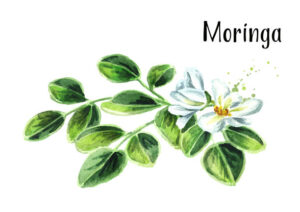
There are too many Medicinal qualities of moringa, in many countries have used Moringa leaves as traditional medicine for common ailments. Clinical studies have begun to suggest that at least some of these claims are valid. With such great medicinal value being suggested by traditional medicine, further clinical testing is very much needed at this time. If studies conclude that even some of the claims are correct, these leaves could become an invaluable resource for people in areas where other forms of treatment are scarce.
Ancient and Traditional Uses of Moringa
Many of the original citations have been collected by Lowell J. Fuglie, [and can be found in his excellent treatise entitled The Miracle Tree, (47)] and by Manuel Palada (116), Julia Morton (102), and Trees for Life (157). Most other compendiums in recent publications or on commercial websites
appear to be highly derivative of these seminal works.
“Moringa shows great promise as a tool to help overcome some of the most severe problems in the developing world—malnutrition, deforestation, impure water and poverty. The tree does best in the dry regions where these problems are worst.”
-Andrew Young, former Atlanta Mayor and United Nations Ambassador 6
“Among the wide range of Green Leafy Vegetables, Moringa is the richest source of Beta-Carotene
[vitamin A], apart from providing other important micronutrients.”
-Dr. Kamala Krishnaswamy, former Director, Indian Council
Of Medical ,Research, Hyderabad7
“Although few people have ever heard of it today, Moringa could soon become one of the world’s most valuable plants, at least in humanitarian terms.”
-Noel Vietmeyer, US National Academy of Sciences, Washington D.C. 8
credit: Jed W. Fahey, Sc.D. , is a nutritional biochemist at the Johns Hopkins School of Medicine.